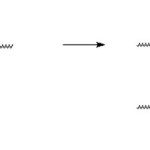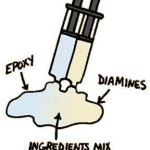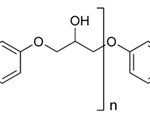In the series on epoxy cure chemistry we covered epoxies, curing agents, and the chemical crosslinking pathways (nucleophilic reactions). In this post we will discuss how to put all the pieces together to do some “molecular engineering” to formulate products with different fully cured properties. This type of approach has been used extensively in commercial products from ... [Click to Continue...]
Epoxy Cure Chemistry Part 4: Nucleophiles in Action
The image below shows an SN2 nucleophilic addition to an epoxy group. Whoa, this is real chemistry! As I wrote this post, it harkens to the days when Morrison and Boyd was a constant companion in my backpack! For those of you who might not be familiar, Organic Chemistry by Morrison and Boyd is a 1250 page classic textbook used ... [Click to Continue...]
Thermoset Cure Chemistry Part 3: Epoxy Curing Agents
In our last post we talked about epoxy resins used in thermoset applications. There are many different types of epoxies with various molecular architectures so epoxies are a very versatile thermoset building block. But they can act alone, then need an accomplice! Diamines are the most common epoxy curing agent, sometimes also called a hardener (i.e. combined with epoxy ... [Click to Continue...]
Thermoset Cure Chemistry Part 2: Epoxy
In our last post we talked about some of the common thermosets. Epoxy is a popular choice since it has good cost/performance, i.e. you can get a wide variety of interesting properties at a reasonable cost. Epoxies are characterized by the three member oxygen containing ring that is easily polymerized using a wide variety of nucleophiles (typically amines). There are many ... [Click to Continue...]
Thermoset Cure Chemistry 1: Introduction
This post is the first in a series that will cover the chemistry and curing of thermosets or thermosetting polymers. This post will provide an introduction to the types and applications of thermosets. The image on the left shows a filament wound container. The individual fibers are impregnated with a thermosetting resin (typically epoxy) and then are wound around a ... [Click to Continue...]





